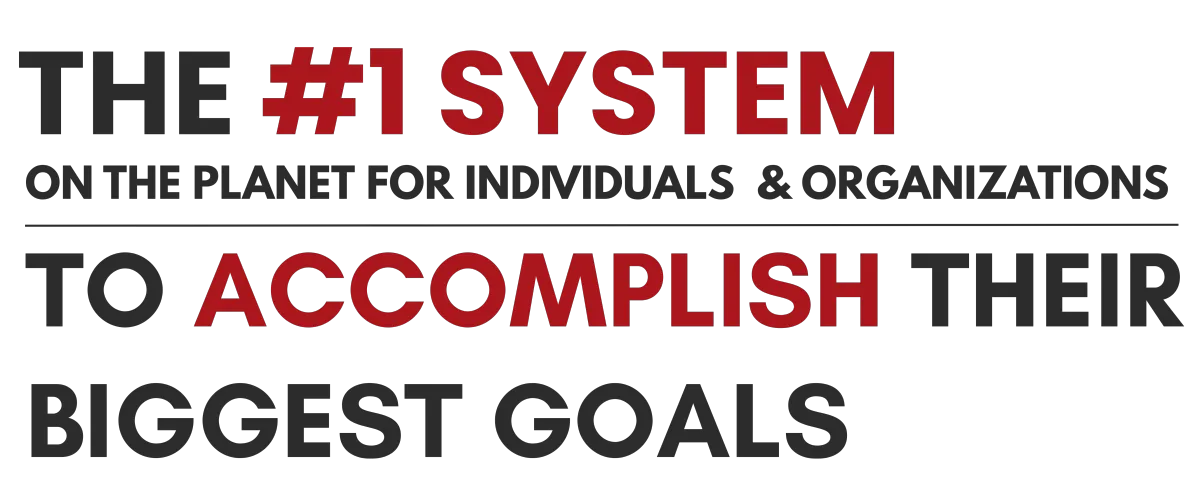GET MORE DONE IN 12 weeks
than others do in 12 months



Get Free Access to the
Getting Started Bundle
Start Your 12 Week Year Now

12 Week Year Planning Template – printable templates to set up your 12 Week Year
Quickstart Training – short video based training on the 12 Week Year methodology
Sample Plans – a set of best-practice 12 Week Plans that produce
Live on-boarding call – join a group call to support you in getting up and running
"A year is no longer 12 months.
It’s 12 weeks."
Get Free Access to the
Getting Started Bundle
Start Your 12 Week Year Now

12 Week Year Planning Template – printable templates to set up your 12 Week Year
12 Week Year Mini Training Course – short video based training on the 12 Week Year methodology
Sample Plans – a set of best-practice 12 Week Plans that produce
Live on-boarding call – join a group call to support you in getting up and running
"A year is no longer 12 months.
It’s 12 weeks."
"Vision without action is
just a dream."
A proven system used by top performers to execute
better, faster, and smarter.
Our Mission

Our mission is simple: Change Lives. We help individuals and organizations accomplish more in 12 weeks than most do in 12 months by providing a proven system that drives focus, execution, and purposeful action for meaningful results.
We're passionate about helping people break free from procrastination and yearly goal fatigue. We believe everyone has untapped potential and with the right structure, accountability, and mindset, radical progress can happen in just 12 weeks.
Our Passion

Our Passion

We're passionate about helping people break free from procrastination and yearly goal fatigue. We believe everyone has untapped potential and with the right structure, accountability, and mindset, radical progress can happen in just 12 weeks.
Why We Exist

Most people don’t fail because they lack goals, they fail because they lack execution. The 12 Week Year exists to close the gap between ambition and achievement. We give people a clear, repeatable process to turn their vision into results—fast.
Core Values

Dream Big

Serve Others

Do Great Work
Who We Are
At the 12 Week Year we learned a long time ago that it’s not what you know: it’s not even who you know: it’s how well you execute that matters.
The fact is great ideas, strategy, and techniques are worthless unless they are implemented. The marketplace only rewards ideas that get implement. It’s the same in your personal life as well.
The 12 Week Year is the #1 Execution System available on the market for individuals and organizations. It is a proven system that ensures effective execution and follow-through driving better results in record time.
Accomplish more in 12 weeks than most do in 12 months is more than just a tag line for us, it’s a way of life – and here’s why.
The 12 Week Year creates a focus on what matters most and a healthy sense of urgency to act. It breaks down the barriers of procrastination, overwhelm, competing priorities, and slow progress that prevents most from accomplishing what they are truly capable of.
If you are an individual or solopreneur looking to start a business, grow your sales, lose weight, or simply be the best version of you, the 12 Week Year is that system.
If you’re a business owner or CEO with a team of four or more, the 12 Week Year provides the structures to get the most from your team and dramatically increase sales, profits, and customer satisfaction. Click here for tips and resources for you and your team.
So, whether you’re an individual or the CEO of a massive company, of anything in-between, you’ve come to the right place.
Welcome to The 12 Week Year!



If you are an individual or solopreneur looking to start a business, grow your sales, lose weight, or simply be the best version of you, the 12 Week Year is that system.
If you’re a business owner or CEO with a team of four or more, the 12 Week Year provides the structures to get the most from your team and dramatically increase sales, profits, and customer satisfaction. Click here for tips and resources for you and your team.
So, whether you’re an individual or the CEO of a massive company, of anything in-between, you’ve come to the right place.
Welcome to The 12 Week Year!

Testimonials
I’ve read every productivity book out there, but the 12 Week Year is the first one that actually changed how I operate. I now get more done in 3 months than I used to accomplish in a whole year. It’s a game-changer.
“Accelerator and my Coach has me accomplishing goals that I couldn’t even imagine before this – I can’t believe I’m where I am right now. Everyone is surprised to see the change in me.”
“I’m in week 11 of Accelerator and have exceeded all my goals, some of which have been stalled for almost 2 years.”
“Through the training, I’ve become personal debt free for the first time since I was 17, secured the funds to launch a women and girls national helpline, and on target to raise £1.2M”
“The 12 Week Year Accelerator Training has been incredible. I’m now getting all the critical stuff done by 1 pm in the afternoon. I almost feel guilty about all the extra personal time I now have.”
“With Accelerator I’m thinking differently, taking more action and am more results focused.”
“With the 12 Week Year I took my business from $2.6M to $7.2M in under two years.”
“With the 12 Week Year my income has increased by 40%, and I take about 14 weeks of personal time, and plan to each year in future.”
“I’ve got my whole team on it and we 3X’d our goals. Incredible!”
Stay Focused
Stay Engaged
Get More Done!
How can the 12 Week Year help you

Achieve more in less time
by compressing your goals into focused 12-week execution cycles.

Eliminate procrastination
with shorter deadlines and increased urgency.

Gain clarity and control
over your goals with a simple, proven planning framework.

Turn ideas into action
by breaking down long-term visions into weekly and daily tasks.

Increase Accountability
through regular check-ins and performance tracking.
They Trust Us

About
Brian Moran
My name is, Brian Moran, Co-Author of the New York Times Bestseller, The 12 Week Year. Over the last several years, my business partner, Michael Lennington and I have had the good fortune of aligning ourselves with many of the largest organizations in the world.
After exhaustive testing, we were able to strip away the noise, and isolate the proverbial “simple hidden on the other side of complex,” which has now become the bedrock of our 12 Week Year Methodology.
About
Brian Moran
My name is, Brian Moran, Co-Author of the New York Times Bestseller, The 12 Week Year. Over the last several years, my business partner, Michael Lennington and I have had the good fortune of aligning ourselves with many of the largest organizations in the world.
After exhaustive testing, we were able to strip away the noise, and isolate the proverbial “simple hidden on the other side of complex,” which has now become the bedrock of our 12 Week Year Methodology.
join the #1 execution newsletter in the world!
Contact Information
The Execution Company
P.O Box 1066
Pinckney, MI 48169
Follow Us
Disclaimer: Results are not guaranteed and will vary based on factors such as market conditions, implementation, and individual effort. The examples and resources provided (including references to books, clients, or revenue) are for educational and illustrative purposes only and should not be considered typical. Your results may differ.









